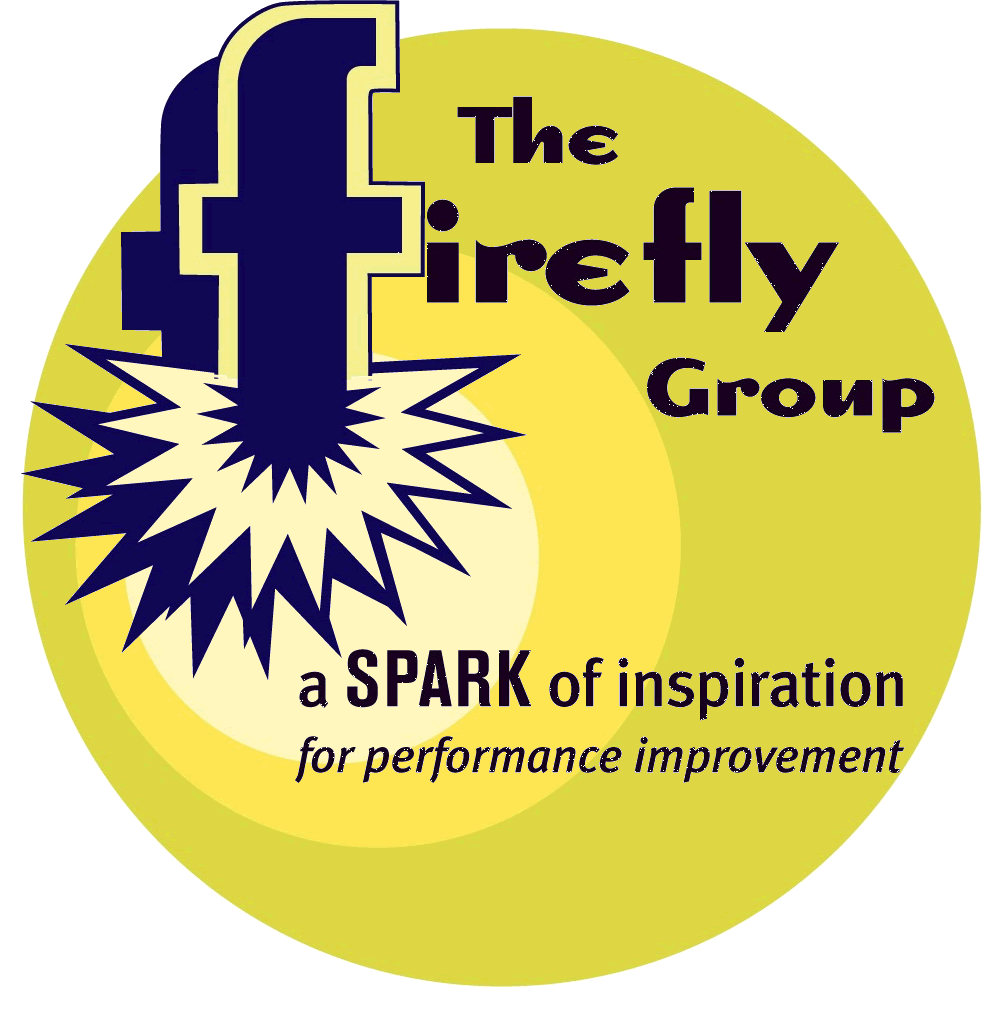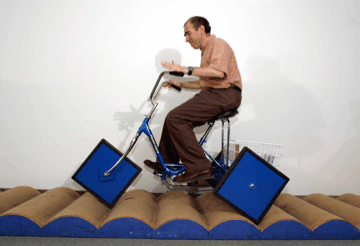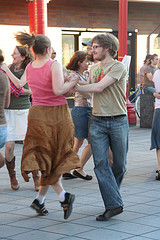


September 2009
In this Issue: A Reader Response from Argentina
|
Say
It Quick |
Discoveries bits of serendipity to inspire and motivate |
Ideas fuel for your own continuous learning |
Activities tips and tricks you can try today |
| All the Right Moves | Reinventing the Wheel | What's Out of Whack? | Bumps in the Road |
In this month's News Flash, we share insights about having a smooth ride no matter where you're going or how you're traveling. We begin with this 99-Word story about the importance of synchronizing with your environment.
All the Right
Moves
When I first learned to square dance, I was very tense. If I made a mistake,
the caller would usually say something to make me look even more foolish.
Then I met Peter Amidon. Peter always makes a point of putting the dancers
at ease. He teaches simple moves that are easy to remember and he always begins
by making sure each dancer knows where their home base is.
He says, “If you get lost, go home and wait to hear something that makes sense.”
Excellent advice anytime we feel uncertain and out of sync!
 Reinventing
the Wheel
Reinventing
the Wheel
The wheel is often cited as being one of the most important inventions of
early humankind. Its use gave people the ability to move very heavy objects
with much less effort. As it evolved, the wheel facilitated trade, exploration,
and warfare and is used in nearly every mechanical device.
But you know all this. I don't need to state the obvious. To do so would be unnecessary. No need to reinvent the wheel, right? Besides, somebody else already has!
Searching the Internet for images to use for last month's News Flash, I stumbled upon this photo of a square-wheeled tricycle that actually works!
Mathematician Stan Wagon, of Macalester College in St. Paul, Minnesota created this contraption that offers as smooth a ride as any round-wheeled vehicle. The secret is the special track designed for the specific dimensions of his right-angled wheel. The bumps you see here are based on the graph of a hyperbolic cosine, which is the shape you get if you let a rope dangle loosely from two supports. Mathematicians call it a catenary. Turn it upside down, and you get a lumpy track perfect for angular wheels.
You can learn more about Stan's invention by visiting the San Francisco Exploratorium web site or by watching a video of the Texas A&M students' version of the cycle in motion at http://www.maniacworld.com/smooth-ride-on-square-wheels.html
Turns out you can reinvent the wheel – as long as you reinvent the road too!
What's Out
of Whack?
You can make a wheel just about any shape you want as long as you match it
to the corresponding catenary road. If you make a five or six sided wheel,
the bumps in the track need to be smaller. As you increase the number of sides
of the wheel, it looks more and more circle-like. Correspondingly, the bumpy
track will get flatter, looking more and more smooth. Wow, soon you're back
to where you started: a perfectly round wheel needs a perfectly flat road.
This suggests that rolling is really about the relationship between the wheel and the road. If things don't roll along smoothly, it's because of an incongruence between wheel and road. When that happens, adjustments will need to be made in either the wheel, the road, or both. Which will you alter?
If you are committed to a particular wheel, like one that can carry a very heavy load at high speeds, you'll make a special road or a track – a railroad, perhaps. If you are committed to going over a particular uneven terrain like stones or sand, you'll modify your wheel with fat balloon tires. And if you want to carry heavy loads over all types of terrain, you'll modify both track and wheel by combining them into a caterpillar tread!
So Stan Wagon's cycle is a nice reminder that we cannot grasp the importance of the objects or events around us in isolation. Their real significance lies in the relationships they form between each other.
Bumps in the
Road
Whether at work, at home, or at play, small problems are liable to surface
in any project or process. Though we might need to stop and smooth things
over, usually we can just keep rolling along. Other situations call for serious
maintenance with an experienced road crew and economic stimulus money from
the Feds!
As suggested in the Ideas section above, when you encounter bumps in the road, the problem is not just the road. The wheel is also a factor!
Consider, for a moment, what might be causing the unevenness in relationships like these. Which is the road and which is the wheel?

Notice that even just considering the relationship between road and wheel opens up more opportunities than only trying to fill the potholes.
So here's this month's activity. Whatever type of wheel you're riding, acknowledge that you're moving along the ground; you're on a road. Try to identify both the wheel and the road of each situation in which you find yourself. Challenge yourself to describe the relationship between that particular road and wheel. Then figure out what needs to change to get the proper match for a smooth, efficient ride. When you get to that point, please, and tell us what you've learned!
Gabirel
writes from Buenos Aires:
I find the seven characteristics that define play (see the book Play
by Stuart Brown, our June 2009 Discovery)
to be very similar to the conditions for gaining a state of flow as Mihaly
Csikszentmihalyi describes in his book Finding Flow. There he shows
a table of research which indicates that playing and sports are the activities
that most frequently produce flow, followed by “Aficciones” (“hobbies” in
English). Watching TV is the last activity for attaining flow!
Read previous
issues. Click Archives!
To add or delete your name to our mailing list, email
with a short note in the subject line.
We want this newsletter to be practical, succinct, and thoughtful. If you have suggestions about how we can meet these criteria, please let us know! Send us an with your thoughts and ideas.
Home
| Services
| Products
| Mission
| Ideas |
The Group
| The Buzz
(c)
2005 The Firefly Group